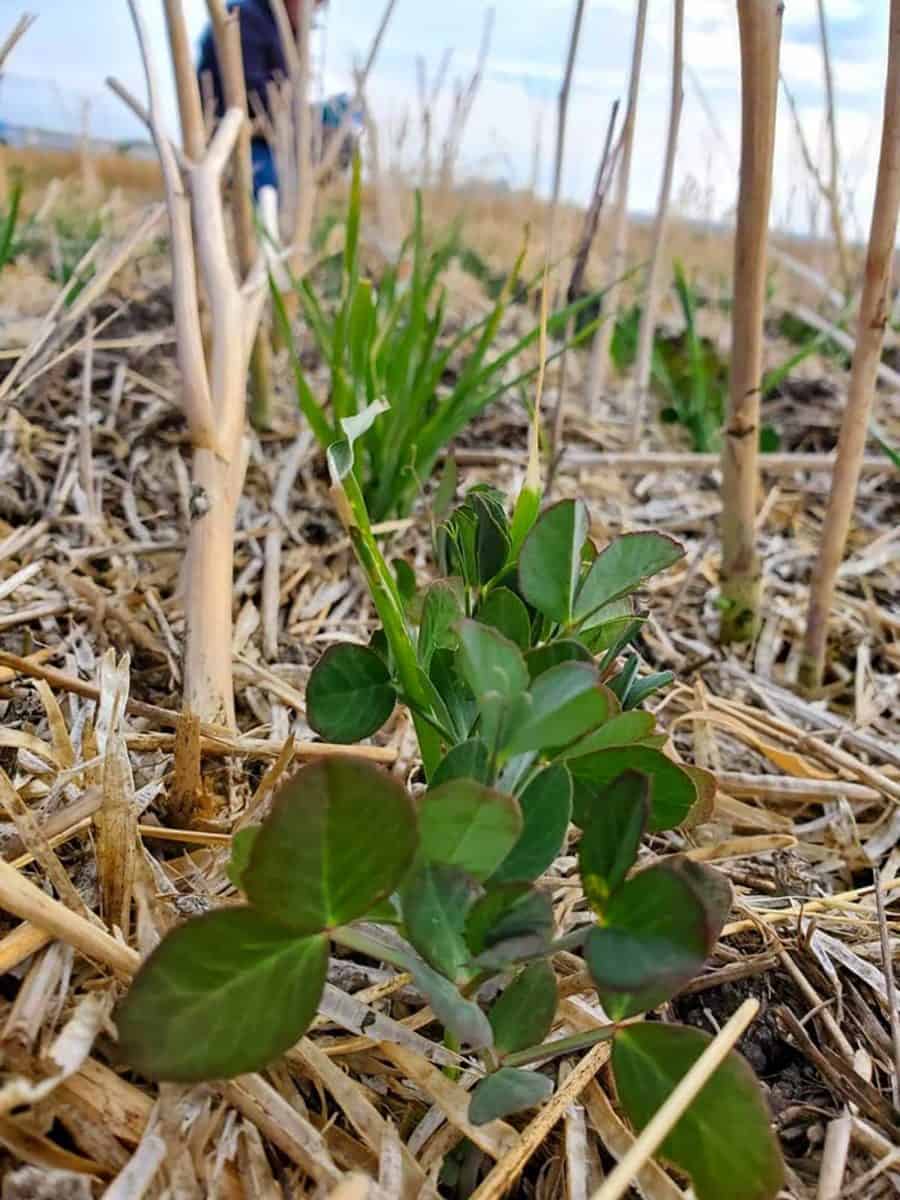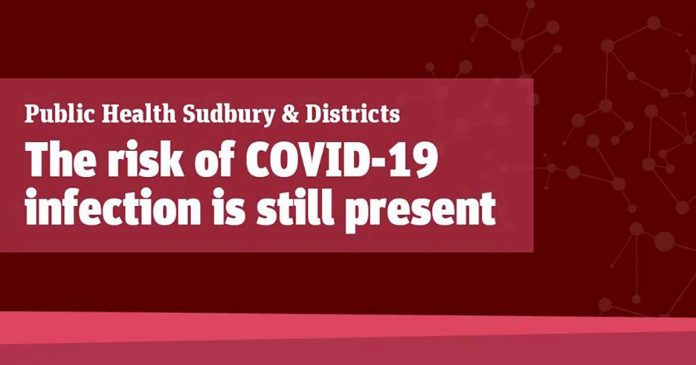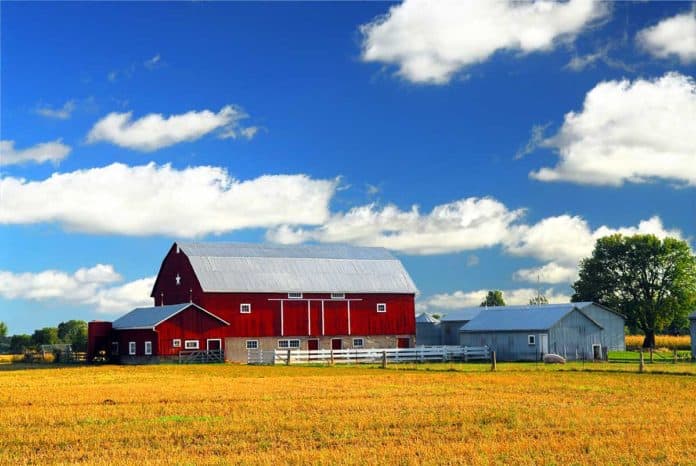WINNIPEG – A new survey by a University of Manitoba researcher seeks feedback from all crop-growing farmers to learn what kinds of cover crops they use on their fields, or if they do not use this method, and the researcher is seeking input from Island farmers especially by the close of the survey next Thursday, April 1.
“Essentially, there’s limited information of how farmers on the ground are using cover crops, as well as their motivation, goals and how they’re actually fitting cover crops into their rotations,” said Callum Morrison, a Ph.D. student at University of Manitoba. “This will really help shape the future of Canadian agriculture.”
So far, 658 Ontarian farmers have responded to the survey but only three have been from Manitoulin. Mr. Morrison is appealing to Islanders to inform him about their relationship, if any, to cover crops, to help gather data that can be used for planning and development in future years.
Cover crops are plant species that grow alongside a farmer’s main crop to provide various benefits to soil health and nutrient levels.
Some past censuses have included items like winter cereal as a cover crop, but this does not meet Mr. Morrison’s definition. For the purposes of this survey, cover crops cannot be a main crop that farmers choose to harvest for direct financial gain.
Companion planting has long been a part of Indigenous agriculture, such as with the famous ‘three sisters’ pairing of beans, corn and squash that each provide nutrients and strength to each other.
Mr. Morrison’s survey aims to explore the extent of cover crops in Ontario, why farmers use them or choose not to, what benefits and problems those farmers have had and identify ways to support their use in the future.
Cover crops have a variety of benefits, unique to each farmer’s situation. Of the people who have responded so far from Ontario, 85 percent grew them to build soil health, 83 percent grew them to increase organic matter in the soil and 67 percent grew them to reduce erosion.
Other benefits that received a smaller share of votes included weed suppression, supporting soil biology, adding nitrogen into the ground, reducing pests and diseases, higher outputs of main crops with better financial gains and to support pollinators like bees.
“A good way to think of this is like a tool in your toolbox. Each (cover crop) species can do things well and other things not so well,” said Mr. Morrison.
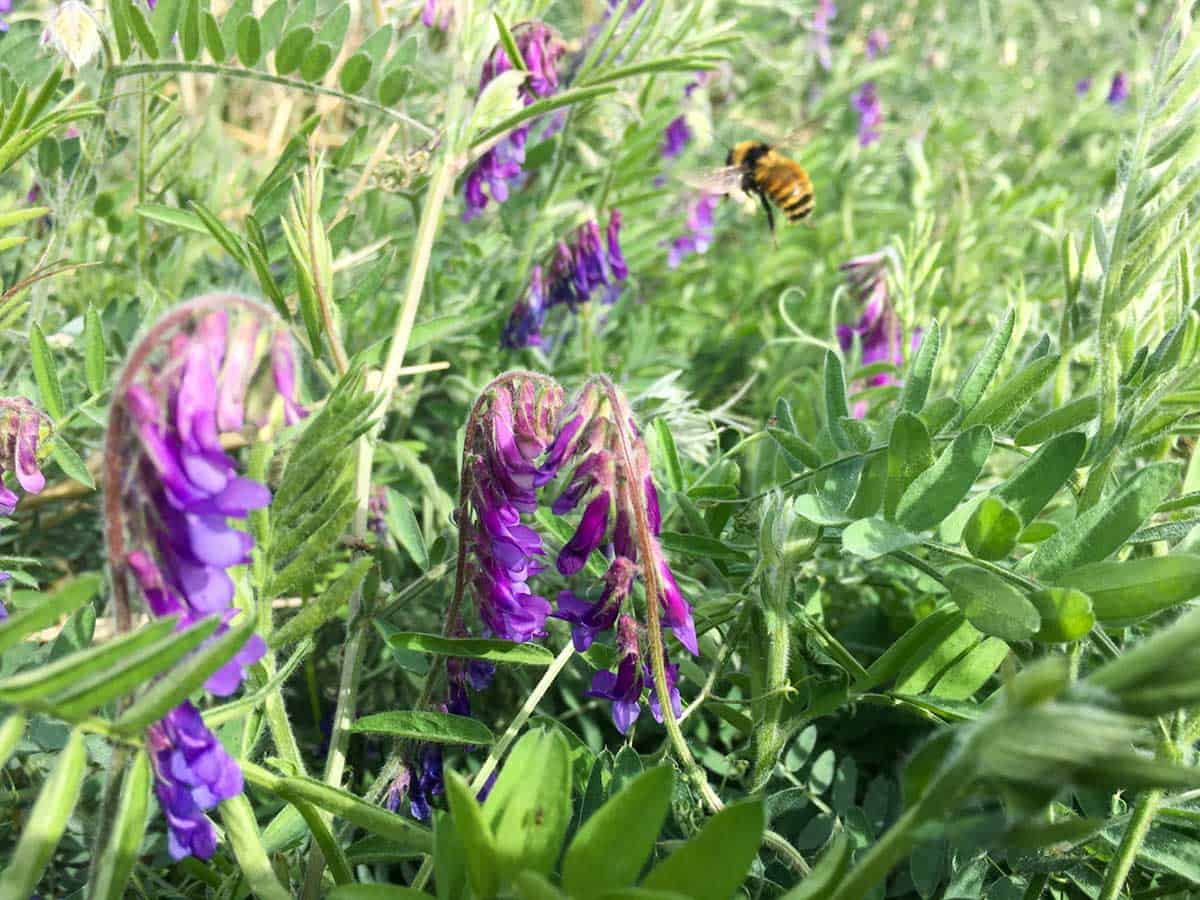
A bumble bee enjoying the flowering vetch cover crop grown in Glenlea, Manitoba. This is part of the organic lab groups research.
He offered examples that species like clover, some peas and beans can add nitrogen to the soil if a farmer feels they need more of that nutrient, and if they have issues with their soil getting compacted and not allowing water to seep into the root area, they may consider growing items with deep taproots like radishes to loosen the soil.
It was in 2019 that Mr. Morrison decided to run a survey across Manitoba about cover crop usage, because this had never been studied in detail across the prairies. The 211 responses vastly outpaced their expectations of 30 and they expanded across the three prairie provinces.
Part-way through the expanded study, Ontario Cover Crop Steering Committee contacted Mr. Morrison and asked him to further extend the process to this province.
Mr. Morrison completed an undergraduate degree at Scotland’s Royal University College in agricultural science, then wrote an undergraduate thesis through an exchange at University of Arkansas. He hitchhiked into Canada for a brief trip to meet farmers across the border, then later returned to this country on a working holiday visa.
A master’s degree in sustainable plant health followed at University of Edinburgh in his native Scotland, before beginning his Ph.D. in agronomy, specializing in cover crops, at University of Manitoba.
In relation to companion planting being a traditional method of sustainable harvest, Mr. Morrison said he would be interested to hear how Indigenous farmers are using such practices. He has worked with Indian Agricultural Program of Ontario to help amplify the survey.
“This survey is supposed to reflect the entirety of agriculture in Ontario. We’ve heard from organic and non-organic growers, massive farms of thousands of acres, small ones, those with livestock and others without. If there are Indigenous farmers on Manitoulin, I want to hear their input and hear what they’re doing; they’re also important,” he said.
The deadline for growers to complete the survey is April 1, but he said he may be able to accommodate a handful of responses after that date if a few trickle in.
He is separating Northern and southern Ontario, and for the purposes of his survey will be including Muskoka and Haliburton with Northern Ontario because the growing conditions are more similar to the North.
Of the 600-some responses in Ontario, only 10 percent have been from the North; 23 used cover crops but the other 36 did not grow such crops.
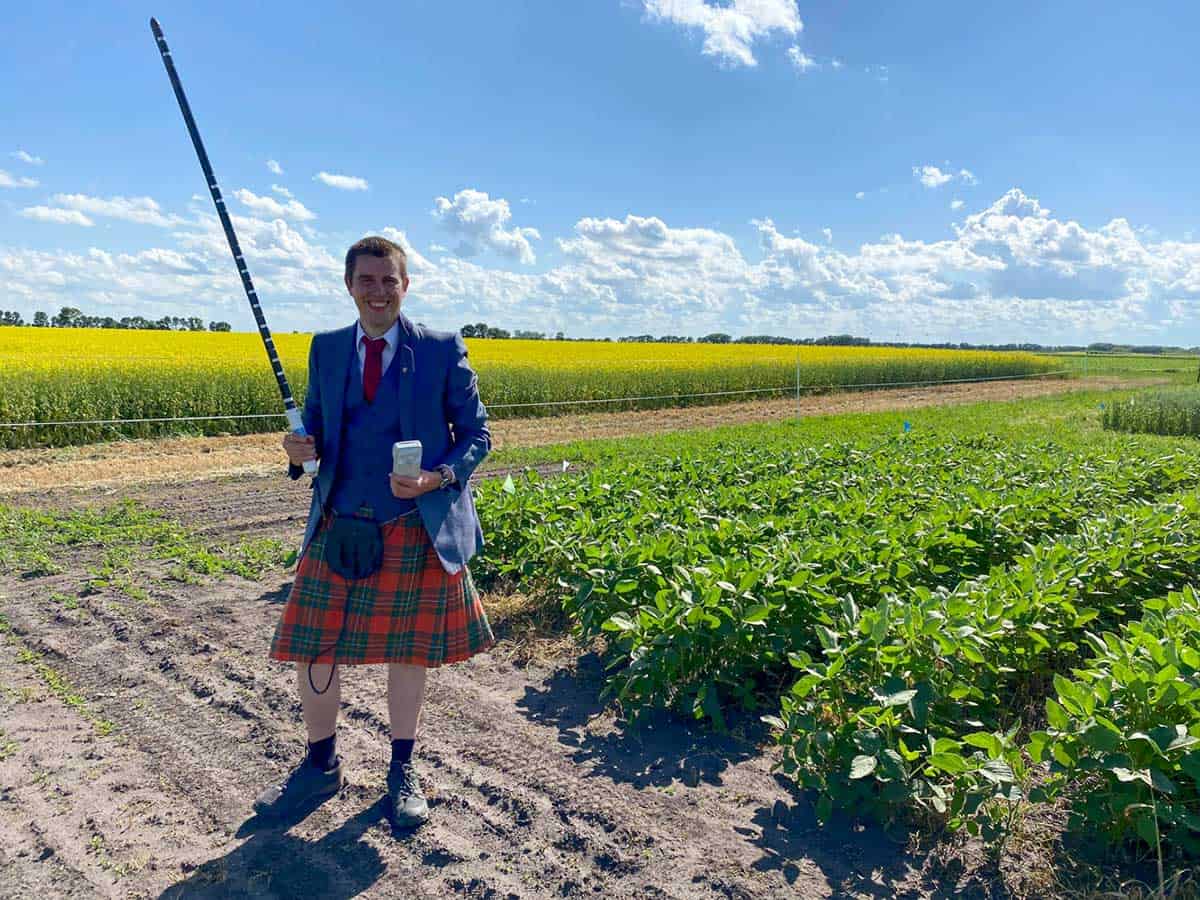
Non-cover-crop responses are further divided into those who have never grown cover crops and never intend to do so, those who have not grown it but may be interested in the future, and those who are not currently using any cover crops but have in the past. Mr. Morrison stressed that hearing from those who do not grow cover crops is equally as important as those who do use them.
To access the survey, visit SurveyMonkey.com/r/OntarioCoverCrop. It should take roughly 15 minutes to complete, though it will be shorter for those who grow cover crops. Mr. Morrison hopes to get 1,000 responses by April 1.


